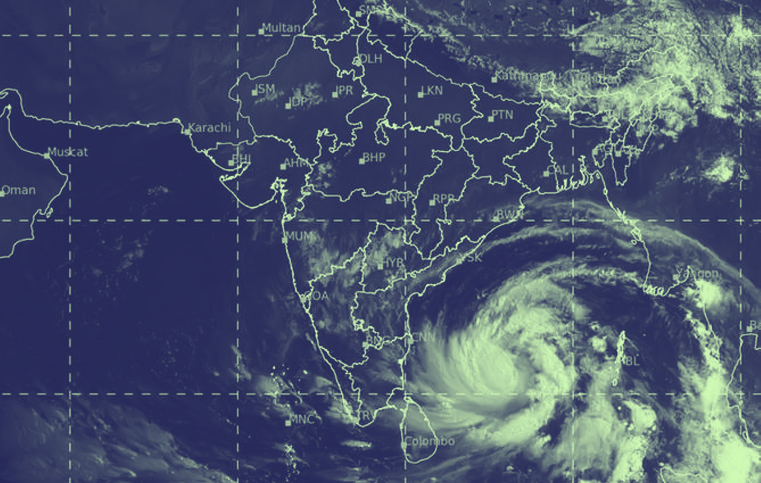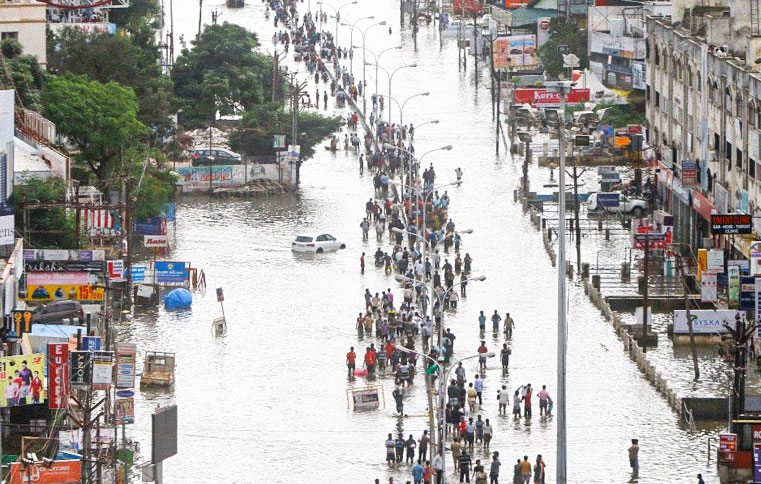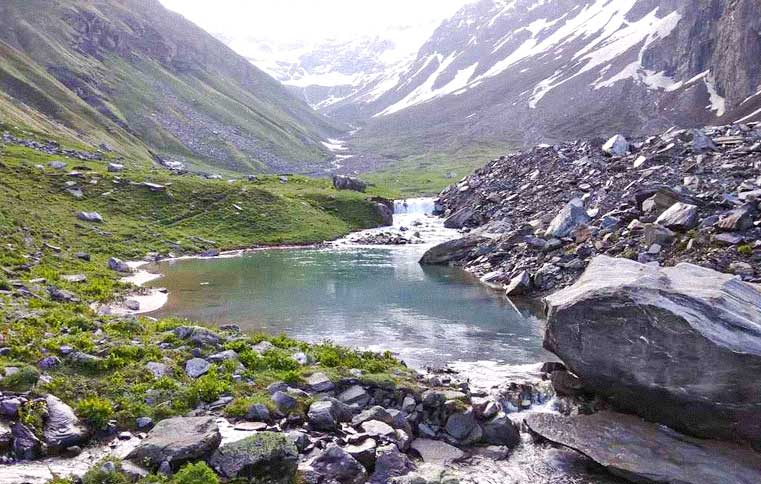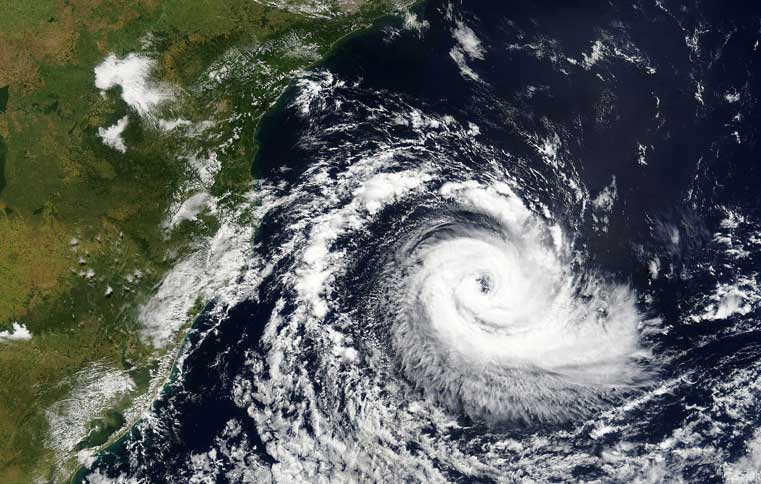What is a Tropical Cyclone and how is it formed?
By: Divya Mahajan | Date: 10th June 2020

Anger is a funny thing, isn’t it? It’s just a human reaction, but can be quite destructive if one lets it simmer for a long time. Have you ever been so angry and tried to hold it in? What happens? Our face heats up, so much so we feel like we are boiling, and we start sweating and all we feel like is screaming.
Something similar happens when a Tropical cyclone is formed. A Tropical cyclone is an intense circular storm that originates over warm tropical oceans between the Tropic of Cancer to the Tropic of Capricorn.
A Tropical cyclone is also known as a Hurricane or Typhoon. These cyclones are characterised by heavy rains, high speed winds that might surpass 320km per hour!
The surface of the ocean gets heated up and there is a transfer of the water vapour and heat from the warm ocean to the overlying air.
This moist warm air slowly rises over the surface of the ocean in a vertical direction and expands; but due to the temperature difference cools down quickly and gets saturated and releases the latent heat due to condensation.
The column of the air in the core also known as the ‘EYE’ of the cyclone is. This core is warmed and moistened. Because of the temperature difference between the hot core of the developing cyclone and the cool surrounding the warm air becomes more buoyant and the upward movement of this air gets enhanced.
The core hot air starts warming up the surrounding air slowly, causing a low-pressure belt to be created on a larger diameter and thus increasing the size of the cyclone.
Since the EYE of the cyclone is the region of low pressure the winds start to swirl around this central region. These winds swirl around the low-pressure zone due to the rotation of earth, by the ‘Coriolis Force’.
The structure of the cyclone is such that the central low-pressure zone is called the EYE. The EYE WALL is about 15-30kms away from the core of the cyclone, where the wind attains the maximum speed.
The outer wall is where the speed of the wind uniformly increases towards the centre. It is about 30-50km away from the eye of the cyclone.
These tropical cyclones are much like long chimneys in the factories in which, the energy is collected in the base and gets sucked up to the top and then is released.
Cyclones can get very destructive especially causing some major damage to life and property. According to a survey done by the WHO, from 1998-2017, 726 million people have been affected worldwide due to such cyclonic storms.
Deeper is the tropical cyclone, worse are its effects. The cyclones cause drowning and immense physical trauma, it disrupts health systems, facilities and services, damages infrastructure including water supplies and shelters.
The risk of water borne diseases increase when there are floods and sea surges.
These Tropical cyclones have strong winds and squalls which cause thunderstorms resulting to loss of life and property. Storm surges and torrential rains accompanied by inland floods cause abnormal rise in the sea levels and lead to the drowning of the coastal regions which cause the loss of livestock and cause soil erosion and destroys away all vegetation.
Talking about India, it being a peninsula, is covered around by water largely. It has a coastline of 7516 kms and is exposed to 10% of the world’s tropical cyclones.
According to the data analysed between 1981-2000, around 370 million people in India are exposed to cyclones hitting the coasts. Around 58% of the total cyclones that get developed in the Bay of Bengal, hit the East coast, while 25% of the total cyclones that originate in the Arabian sea hit the West coast of India.
Some of the major cyclones that done have massive damage to the country in recent times are: Cyclone Vardah in 2016 that caused major destruction in the Andaman and Nicobar Islands, Cyclone Fani in 2019 in Odisha, Cyclone Ockhi in 2017 that affected the states of Kerala, Tamil Nadu and Gujrat killing over 200 people.
And the very recent and destructive cyclones; Cyclone Amphan and Cyclone Nisarga hitting the east and west coast respectively.
Anger is usually a way of expressing a person’s annoyance to a situation or person, Cyclone’s might just be the nature’s way of warning us and expressing its annoyance to the horrible way we humans have been treating it.
With the ever-increasing pollution, cutting down of tress, violating the water resources, increase in the global warming, we are stepping even further to experiencing the wrath of mother nature.
Its time that we let the nature flourish and help us grow within it and not over and around it and suffocate it. Its time we understand that the nature gets to live on this earth as much as we the humans who are inhabiting it!












